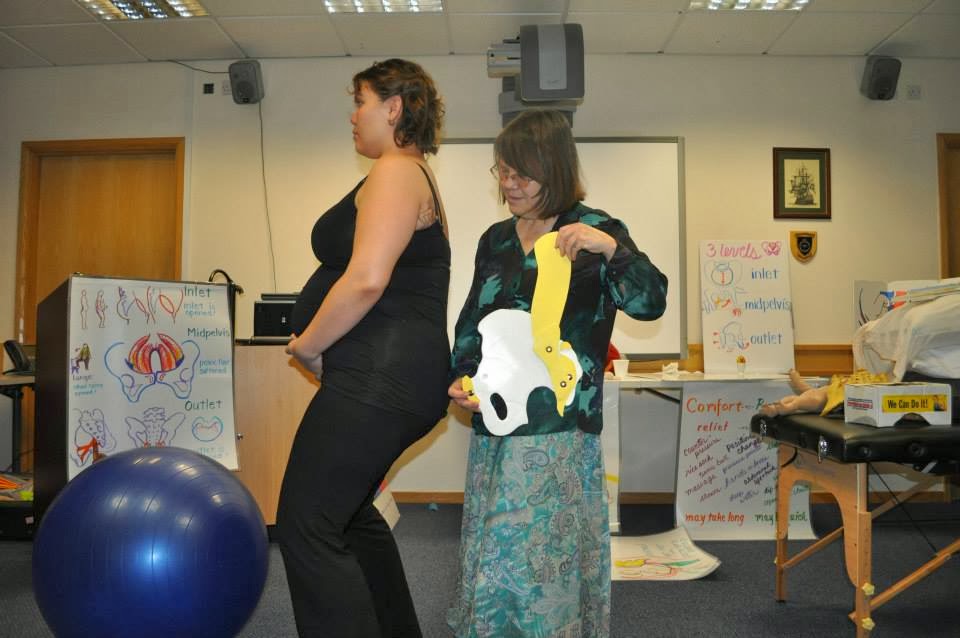“I just came out of my doctor’s appointment for 39 weeks. He says no cervical change (cervix is posterior) and baby is still floating.”
The cervix can change in hours so dilation is no indication. The posterior aim of the cervix is expected and can be helped with improved sacral mobility, one way of achieving that is the Forward-Leaning Inversion daily for two weeks. Can we get there faster? Perhaps! 2x a day for one week? Let’s try it, but only for 30 seconds each time.
Labor is the most likely time to get baby into the pelvis. For now, its all about balancing the muscles so that when labor starts, the pelvis moves freely and evenly. Baby being in LOT/LOA position (not feeling fingers wiggling on both sides of your center line) is a beneficial sign.
Baby floating MIGHT indicate, and often does, that there are more muscles to “untwist” with forward leaning inversions, sidelying release, psoas balancing, and walking.
Anterior pelvic tilts while squatting properly in pregnancy might be quite helpful. Use door handles on each side of an open door and squat as if sitting on a chair far behind you! 30 seconds of such squats after using the toilet… in fact, get a squatty potty for passive squatting on the toilet to improve alignment.
Circles on the ball helps when muscles are “open” (lengthened and not overly tight).
Once labor begins, circles on the ball to happy music may see engagement.
With a history of babies that don’t engage, the abdominal lift and tuck (posterior pelvic tilt during the contraction) can bring baby into the pelvis.
If after ten contractions with abdominal lift and tuck you find baby still at the brim (-3) then its time for Walcher’s “Open the Brim” during and between 3 contractions.
See the descriptions on under Techniques.
We don’t know about engagement until labor contractions can show what potential these techniques have.





